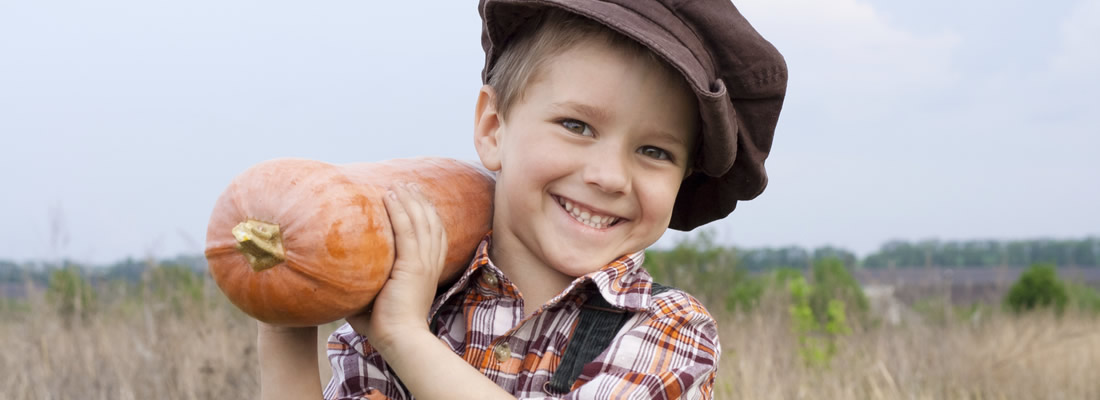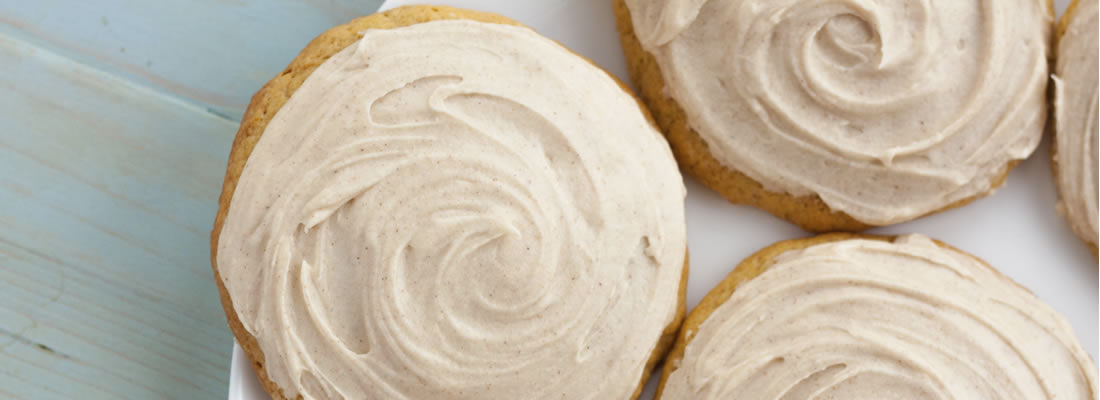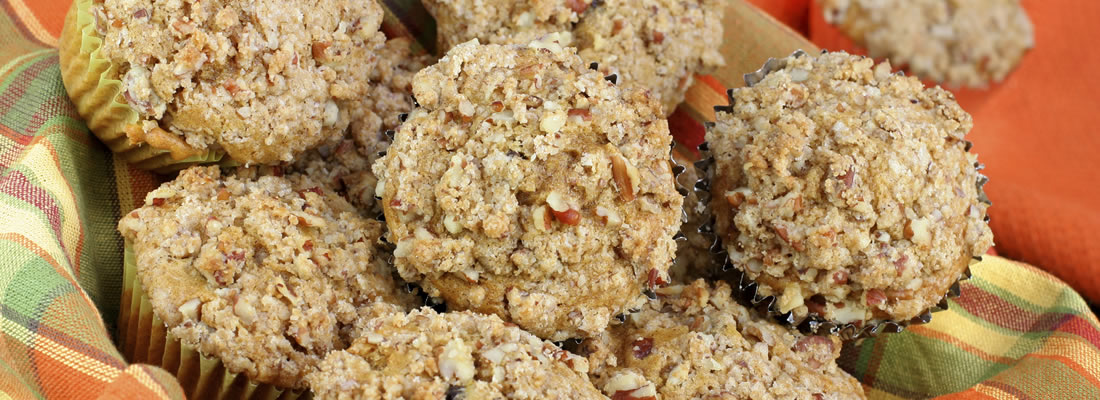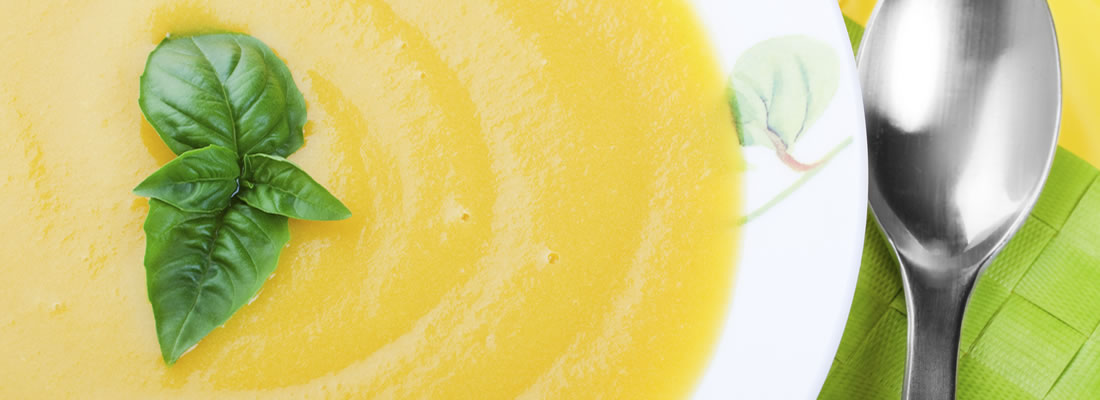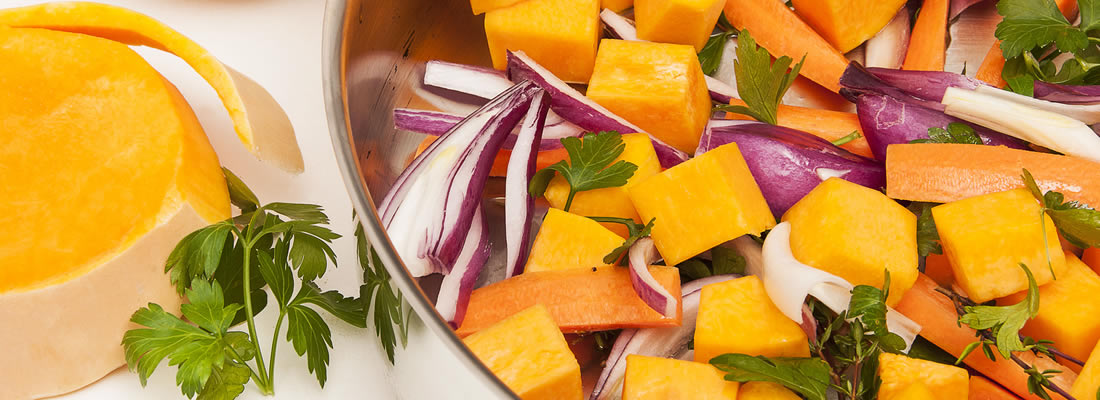There’s something about the Fall season that inspires even reluctant cooks to venture into the kitchen to take a stab at making something seasonal. From pumpkin bread to butternut squash soup, the flavors of fall are rich, healthy and, thankfully, very bladder friendly! Winter squash is also packed with nutrients. A cup of butternut squash contains almost half the daily amount of Vitamin C, nearly 300% of Vitamin A, as well as B-6, iron, calcium and magnesium. And, yes, that’s Vitamin C that won’t feel like battery acid in a tender IC bladder.
If you’re tired of the same ole bland foods and are desperate for some flavor, I encourage you to have some fun with winter squash! I have a long tradition of making pumpkin or butternut squash soup on Halloween night. Butternut squash ravioli and pasta sauce are a lovely alternative to tomato products. My favorite snack is healthy pumpkin drop cookies with an occasional dollop of cream cheese frosting. And, what could be easier to make on a Sunday morning than pumpkin apple streusel muffins, where having seconds is worthwhile if not just for the extra servings of fruit and veggies!
Of course, if you’ve never cooked with pumpkin or winter squash, you’ll probably be asking how that hard, knobby rock of a veggie could possibly be edible. In fact, the hardest part of preparing winter squash is just cutting it before you cook it but rest assured that once it is cooked, it can be melt in your mouth perfection!
Types of Winter Squash
Acorn Squash is shaped like a large acorn with a very hard skin with ridges that run from top to bottom. After baking and with a little bit of butter, brown sugar and cinnamon, it makes a tasty vegetable alternative that will warm hungry bellies on the coldest winter nights, perfect with baked ham or pork.
Butternut Squash are bell shaped with a thin top and round bottom. The skin is a peachy, yellow tan color that covers rich orange, yellow flesh that is surprisingly sweet. Butternut squash is often used in soups and italian dishes, such as ravioli or lasagna.
Sugar Pumpkins are a smaller, much fleshier version of the traditional jack-o-lantern and are meant for cooking. This squash is used for making traditional pumpkin pie yet can also work in quesadillas.
Spaghetti Squash is great for kids! An oblong shape with a yellow skin, once cooked, comes out as “strings” that resemble noodles. In fact, this is a perfect healthy pasta alternative.
Kabocha Squash is round in shape with either green or orange skin. It can have brown spots and/or stripes running from top to bottom. Green Kabocha is perfect as part of a main course while its red cousin is sweeter and works well in desserts.
Preparing Winter Squash
Mashed squash is easy to prepare. Simply cut the squash in half or quarters, scoop out the strings and seeds. Drizzle with a little extra virgin olive oil and then bake at 300 degrees until soft and fork tender. Cool slightly and then scoop out the flesh for use in your favorite recipes, such as soup or pumpkin pies! Or serve with butter as an easy vegetable side dish. The microwave can also work but it doesn’t produce quite the same rich flavor. Cubed squash requires that the squash be peeled but the skin is awfully hard so here’s a trick. Microwave the squash for a minute or two to soft-en the skin! Peel, then slice the squash in half, scoop out the seeds, strings and cut.

